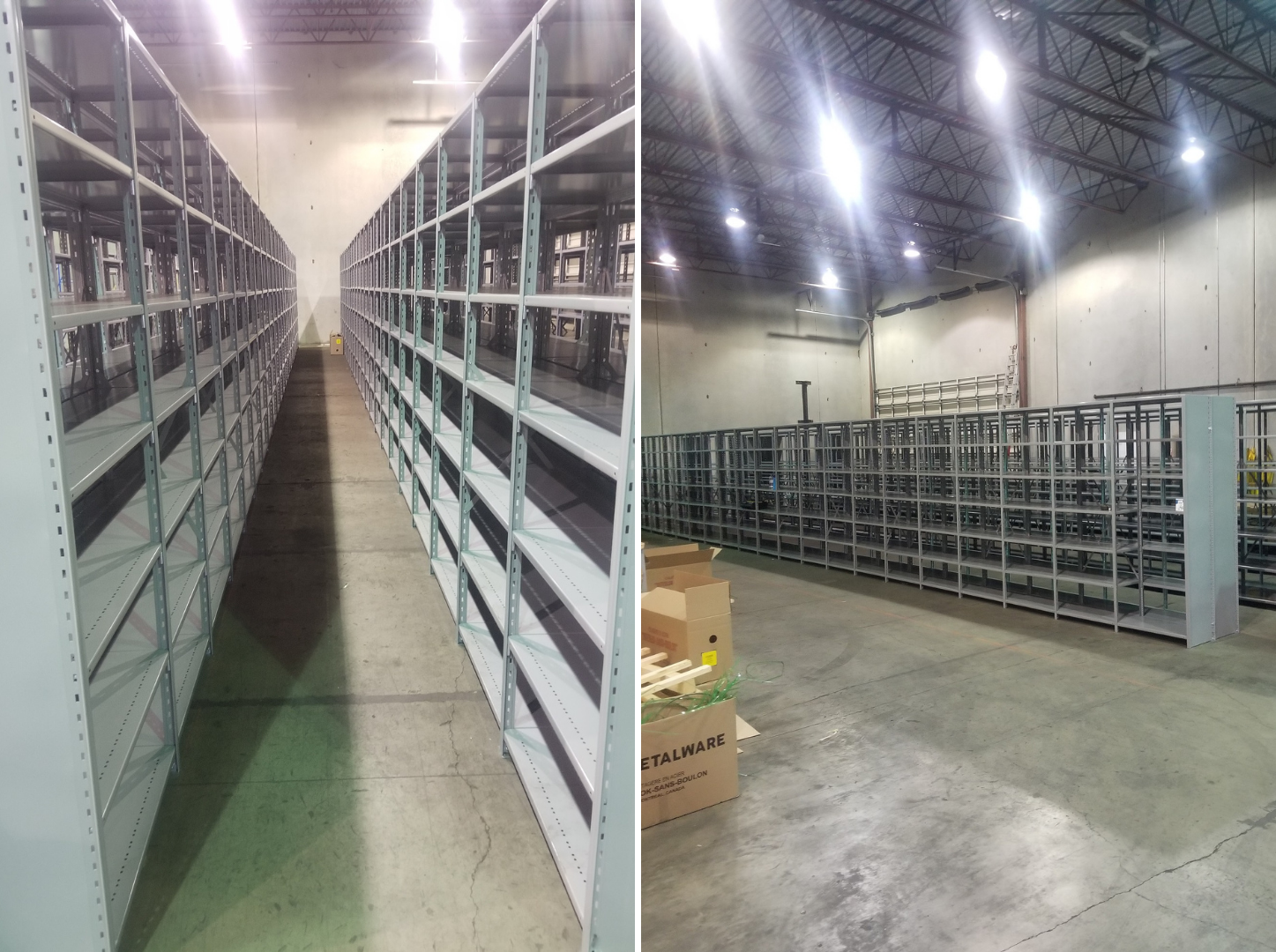DELTA, B.C.—WHEN AGING RACK FAILS A WORKSAFEBC INSPECTION, WHAT MIGHT HAVE BEEN A QUICK FIX TURNS INTO A METHODICAL, YEAR-LONG INSTALLATION OF A CREATIVE STORAGE SOLUTION.
A distributor of sprinkler pipes, valves and fittings, reached out to Steelhead when it failed a warehouse inspection performed by a WorkSafeBC occupational officer. The company’s racking had been written up for missing weight capacity placards, BC Building Code violations, visible damage and a failure to meet seismic standards. True, no warehouse is without damage, but the distributor was ordered to urgently remediate the safety issues at its earliest opportunity.
Initially, the client hoped to make repairs to the existing rack and obtain weight capacities, which is typically a straightforward task that can be completed with information provided by the rack manufacturer.
Upon arrival on-site, Steelhead inspected the racking. It was unfamiliar to us (not a style of rack we had encountered before in our entire 23 combined years of experience servicing British Columbian warehouses) and it was, indeed, in poor condition.
“The rack was overloaded, bending and narrow,” said Greg Hubbert, co-owner of Steelhead Warehouse Solutions.
Without a manufacturer to speak with, Steelhead had no substantive information about the rack’s section properties (i.e.: material construction and steel gauge value). This information would have informed whether the rack could be brought inline with seismic standards and made Code-compliant. Ultimately, Steelhead concluded that the mystery rack in its current condition could not be engineered.
Despite our judgement, the client was optimistic about fixing the rack and we were more than happy to help produce a second opinion.
A professional engineer visited the customer’s warehouse to make an official assessment of the rack which confirmed it was un-engineerable.
With the scope of the project now broadened beyond simple rack repair, the job became competitive and Steelhead was in competition with at least two major racking companies.
DESIGN
Steelhead knew that budget would be a major consideration in the selection decision. Every other competitor presented the client with designs that would dismantle the old racking entirely and replace the system with brand-new racking. Not only would this be costly, it would cause a full stop to the distributor’s operations.
Alternatively, Steelhead presented a cost-effective hybrid solution based on information we had gleaned from the customer: as it happened, the distributor’s head office in Quebec had some frames which could be incorporated into the design alongside new frames to lower the overall project cost. We also knew this redesign presented an opportunity to improve the efficiency of the approximately 30,000-square-foot warehouse. With its strategic and creative solution, Steelhead won the job.
INSTALLATION
When the frames arrived from Quebec, they were judged to be slightly underbuilt. Upon consultation with an engineer, we determined additional bracing would ensure the rack met and exceeded seismic requirements.
When it came to installing this system, it was critical that the customer experienced little-to-no disruption to its operations—a challenge, to be sure, given the volume of rack and shelving being outfitted. (Two hundred bays of Metalware shelving and 12 rows containing 240 bays of roll-formed rack.) Our team of labourers dismantled, removed and installed it all one row at a time.

“The entire project, from the initial visit to completion, spanned a period of 18 months,” Hubbert noted. “It was a slow and methodical install, but we were not compelled to rush the process at the customer’s expense.”
When the project wrapped, the distributor could now boast both improved warehouse efficiency and a racking system that met and exceeded WorkSafeBC safety standards. And it didn’t hurt that Steelhead was able to save them somewhere in the ballpark of $80,000 along the way.
Project completion: July 2020.